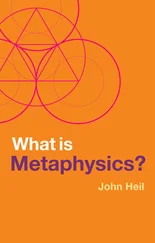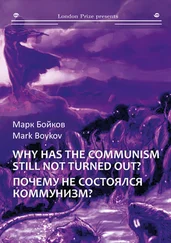Philosopher, Johannes Gutenberg-Universität Mainz; author, The Ego Tunnel
I have been predicting this for a number of years. But now it is really happening, and at a truly amazing, historically unprecedented speed. The number of untested but freely available psychoactive substances is dramatically rising. In the European Union in 2011, new drugs were detected at the rate of roughly one per week according to the EMCDDA–Europol annual report on new psychoactive substances released on April 26, 2012. A total of forty-nine new psychoactive substances were officially notified for the first time in 2011, via the EU early-warning system. This represents the largest number of substances ever reported in a single year, up from forty-one reported in 2010 and twenty-four in 2009. All in all, this means 164 new drugs since 2005—but also that the annual record has now been broken for three years in a row.
All of the new compounds reported in 2011 were synthetic. They are cooked up in underground labs; and increasingly organized crime develops the market and imports them—for example, from China. Next to nothing is known about their pharmacology, toxicology, or general safety; almost all these substances have never been tested in vivo or in animal models. This makes the situation difficult for medical staff at psychiatric emergency units, with kids tripping on substances whose names doctors have never heard of, even during their university education; the substances did not yet exist while the doctors were being trained.
I sometimes naïvely assumed that in the end most of these substances would turn out to be fairly benign, but even for “spice drugs” (synthetic cannabinoids sprayed on herbal smoking mixtures, often marketed as “legal highs”), deaths and serious heart problems have now been reported in young healthy adolescents.
Last October, a twenty-one-year-old in New Orleans died from taking just a single drop of 25-I (25I-NBOMe), a new synthetic hallucinogenic drug. In the United States, at least three more deaths from this new phenethylamine (originally discovered in Germany) have been reported in Minnesota and North Carolina, the victims being seventeen, eighteen, and twenty-five years old.
Everybody knows about acute adverse reactions, psychotic effects, addiction—we do have some cultural experience. But what about long-term effects, such as early-onset cognitive decline, say—a somewhat steeper slope than in normal aging? Unexpected carcinogenic agents? It will take us a long time to discover and verify such effects.
Does anybody remember thalidomide? The situation is now completely out of hand. And it is a complicated situation: We might ban (or attempt to ban) early generations of substances with low health-hazard profiles, creating a psychopharmacological arms race, leading to replacement by ever newer and potentially more dangerous compounds.
In 2011, the list of substances registered was dominated by synthetic cannabinoids (twenty-three new compounds on the market) and synthetic cathinones (eight new molecules). They now represent the two largest drug groups monitored by the European early warning system and make up around two-thirds of the new drugs reported that year; but, of course, this may change soon. The War on Drugs has failed, but the process of scientific discovery is going on. The number of substances in the illegal market will increase and perhaps altogether new categories of drugs will emerge—plus the corresponding “neurophenomenological state-classes,” as I like to call them.
What are the main causal factors that have brought about this development?
First, it’s a combination of scientific progress and human nature: Fundamental research—for example, in neuropharmacology—simply moves on, and new knowledge and newly developed technologies meet age-old human desires for spiritual self-transcendence, hedonism, and recreation. Plus greed. For me, new psychoactive substances are a paradigm example of how neurotechnology turns into consciousness technology (I like to call it “phenotechnology”). Low-level nuts-and-bolts molecular neuropharmacology creates not only new forms of subjective experience but also high-level effects for society as a whole: invisible risks, new industries, emerging markets.
The second causal factor is the Internet. An Internet snapshot conducted in January 2012 showed 693 online shops offering at least one psychoactive substance or product, up from 314 in January 2011 and 170 in January 2010. Recipes for many of these new illegal substances, as well as first-person reports of the phenomenology associated with different dosages, are available on the Internet—easily accessed by the alternative psychotherapist in California, the unemployed chemistry professor in the Ukraine, or the Chinese mafia. And now the sheer increase in the speed with which new drugs appear on the market makes all established procedures obsolete.
But there is at least one deeper reason for the situation we will face in the decades to come: Half a century ago, the Western world deliberately opted for a culture of denial and repression. In the sixties, we witnessed a semisynthetic psychedelic drug of the ergoline family spread around the world, with millions of new users and a new generation of underground chemists. The appearance of LSD was a historically new situation. We might perhaps have had a chance to deal with the challenge then, rationally, based on ethical arguments. The really difficult, and most important, task would have been to weigh the psychological and social risks against a general principle of liberty and the intrinsic value of the experiences resulting from one or another altered brain state. But we decided to push it underground and look the other way. Half a century later, a globalized and scientifically well-informed underground chemistry strikes back. More kids are going to die. It would be starry-eyed optimism to think we can still control the situation.
PAUL KEDROSKY
Investor; contributing editor, Bloomberg & Partner, SK Ventures
How many calls to a typical U.S. fire department are actually about fires? Less than 20 percent. If fire departments aren’t getting calls about fires, what are they mostly getting calls about? They are getting calls about medical emergencies, traffic accidents, and, yes, cats in trees, but they are rarely being called about fires. They are, in other words, organizations that despite their name deal mostly with everything but fires.
Why, then, are they called fire departments? Because of history. Cities used to be built out of pre-combustion materials—wood straight from the forest, for example—but they are now mostly built of post-combustion materials—steel, concrete, and other materials that have passed through flame. Fire departments were created when fighting fires was a more urgent urban need, and now their name lives on, a reminder of their host cities’ combustible past.
Everywhere you look, you see fire departments: not literally fire departments, but organizations, technologies, institutions, and countries that, like fire departments, are beyond their “past due” date or weirdly vestigial yet remain widespread and worryingly important.
One of my favorite examples comes from the siting of cities. Many U.S. river cities are where they are because of portages—the carrying of boats and cargo around impassable rapids. This meant, many times, overnight stays, which led to hotels, entertainment, and, eventually, local industry, at first devoted to shipping but then broader. Now, however, those portage cities are prisoners of history, sitting along rivers that no longer matter for their economy, meanwhile struggling with seasonal floods and complex geographies antithetical to development—all because a few early travelers, using transportation technologies that no longer matter, had to portage around a few rapids. To put it plainly, if we rebooted right now, most of these cities would be situated almost anywhere else first.
Читать дальше












